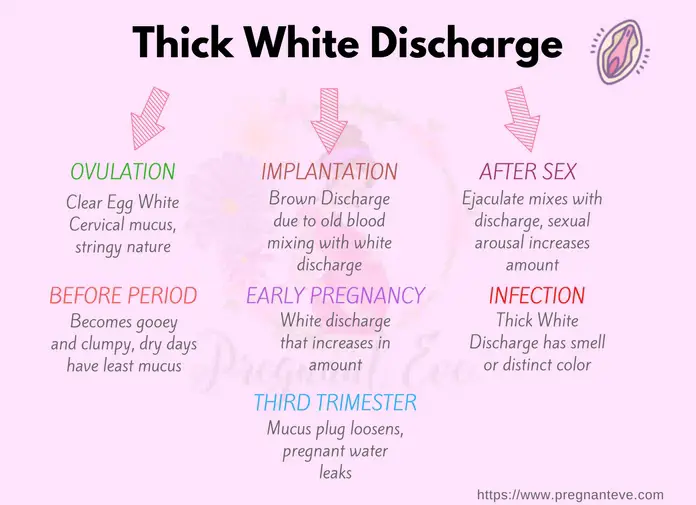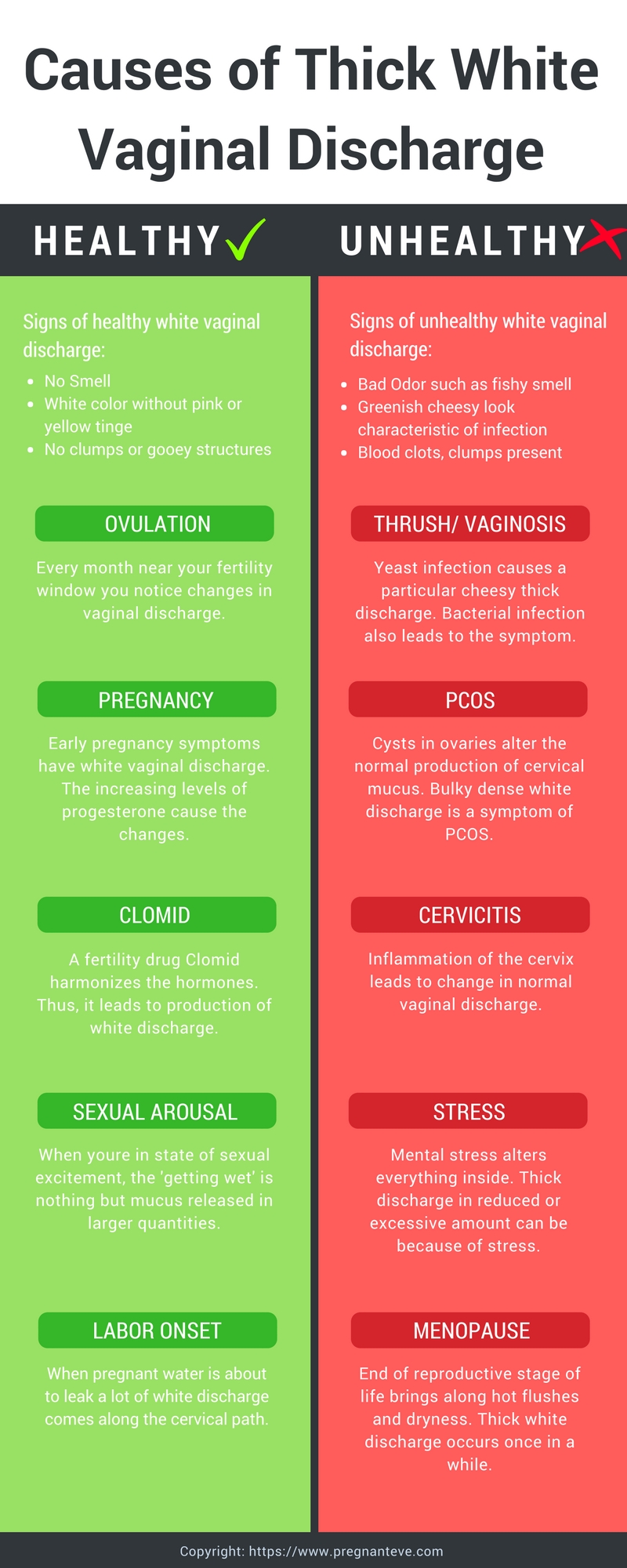White Thick Discharge No Itch Pregnancy - Thick, white discharge is typical during the menstrual cycle and usually indicate ovulation. This milky white substance is often referred to as leukorrhea and is. Creamy white discharge before your period or menstrual phase is normal and may not always indicate pregnancy. However, occasionally it could indicate an. Your discharge can give you a clue about what stage of. One of the most common types of discharge is white discharge. White milky white vaginal discharge is usually a sign of a normal menstrual cycle.
This milky white substance is often referred to as leukorrhea and is. White milky white vaginal discharge is usually a sign of a normal menstrual cycle. Your discharge can give you a clue about what stage of. One of the most common types of discharge is white discharge. Thick, white discharge is typical during the menstrual cycle and usually indicate ovulation. Creamy white discharge before your period or menstrual phase is normal and may not always indicate pregnancy. However, occasionally it could indicate an.
However, occasionally it could indicate an. Your discharge can give you a clue about what stage of. Thick, white discharge is typical during the menstrual cycle and usually indicate ovulation. One of the most common types of discharge is white discharge. This milky white substance is often referred to as leukorrhea and is. Creamy white discharge before your period or menstrual phase is normal and may not always indicate pregnancy. White milky white vaginal discharge is usually a sign of a normal menstrual cycle.
Thick White Discharge Types, Causes & Treatment
This milky white substance is often referred to as leukorrhea and is. Thick, white discharge is typical during the menstrual cycle and usually indicate ovulation. However, occasionally it could indicate an. Creamy white discharge before your period or menstrual phase is normal and may not always indicate pregnancy. Your discharge can give you a clue about what stage of.
Thick white discharge What does it mean, and is it normal?
One of the most common types of discharge is white discharge. White milky white vaginal discharge is usually a sign of a normal menstrual cycle. However, occasionally it could indicate an. This milky white substance is often referred to as leukorrhea and is. Your discharge can give you a clue about what stage of.
Thick White Discharge Types, Causes & Treatment
One of the most common types of discharge is white discharge. Your discharge can give you a clue about what stage of. Creamy white discharge before your period or menstrual phase is normal and may not always indicate pregnancy. However, occasionally it could indicate an. Thick, white discharge is typical during the menstrual cycle and usually indicate ovulation.
Milky white discharge causes before after period pregnancy odor thick
Creamy white discharge before your period or menstrual phase is normal and may not always indicate pregnancy. This milky white substance is often referred to as leukorrhea and is. However, occasionally it could indicate an. Your discharge can give you a clue about what stage of. White milky white vaginal discharge is usually a sign of a normal menstrual cycle.
Milky white discharge causes before after period pregnancy odor thick
This milky white substance is often referred to as leukorrhea and is. White milky white vaginal discharge is usually a sign of a normal menstrual cycle. Creamy white discharge before your period or menstrual phase is normal and may not always indicate pregnancy. Your discharge can give you a clue about what stage of. One of the most common types.
Thick white discharge BabyCenter
This milky white substance is often referred to as leukorrhea and is. Creamy white discharge before your period or menstrual phase is normal and may not always indicate pregnancy. Your discharge can give you a clue about what stage of. White milky white vaginal discharge is usually a sign of a normal menstrual cycle. One of the most common types.
Is White Discharge Before Period Sign of Pregnancy? 5 Best Causes of
However, occasionally it could indicate an. Your discharge can give you a clue about what stage of. This milky white substance is often referred to as leukorrhea and is. Thick, white discharge is typical during the menstrual cycle and usually indicate ovulation. White milky white vaginal discharge is usually a sign of a normal menstrual cycle.
Understanding White Thick Discharge Is It Normal During Pregnancy
One of the most common types of discharge is white discharge. Your discharge can give you a clue about what stage of. However, occasionally it could indicate an. This milky white substance is often referred to as leukorrhea and is. Thick, white discharge is typical during the menstrual cycle and usually indicate ovulation.
Milky White Discharge Early Pregnancy Top 5 Causes YouTube
White milky white vaginal discharge is usually a sign of a normal menstrual cycle. Your discharge can give you a clue about what stage of. Thick, white discharge is typical during the menstrual cycle and usually indicate ovulation. One of the most common types of discharge is white discharge. Creamy white discharge before your period or menstrual phase is normal.
How To Deal With White Discharge During Pregnancy CK Birla Hospital
White milky white vaginal discharge is usually a sign of a normal menstrual cycle. This milky white substance is often referred to as leukorrhea and is. Creamy white discharge before your period or menstrual phase is normal and may not always indicate pregnancy. Your discharge can give you a clue about what stage of. One of the most common types.
This Milky White Substance Is Often Referred To As Leukorrhea And Is.
Your discharge can give you a clue about what stage of. One of the most common types of discharge is white discharge. Creamy white discharge before your period or menstrual phase is normal and may not always indicate pregnancy. However, occasionally it could indicate an.
White Milky White Vaginal Discharge Is Usually A Sign Of A Normal Menstrual Cycle.
Thick, white discharge is typical during the menstrual cycle and usually indicate ovulation.









